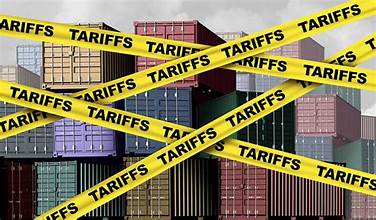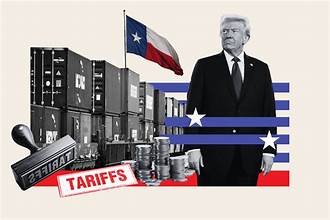
In a significant development for global trade relations, the European Union (EU) has come to terms with the imposition of a 15 percent tariff by the United States on a range of European goods. While this move has sparked concern among industry leaders and policymakers across the continent, EU officials have indicated that resistance may prove futile and have instead chosen to focus on minimizing economic fallout and recalibrating trade strategies. The tariff, although criticized by many as unilateral and protectionist, seems to represent a shifting paradigm in global trade dynamics—one that emphasizes national economic interests over multilateral cooperation.
Background of the Tariff
The 15 percent U.S. tariff primarily targets industrial and consumer goods imported from EU member states. This includes machinery, automobile parts, food products, and some luxury items. The decision reportedly stems from long-standing trade imbalances and perceived unfair advantages enjoyed by European exporters, particularly in sectors such as aviation and agriculture. Washington argues that the tariff is a corrective measure aimed at leveling the playing field for American producers.
Trade tensions between the U.S. and EU are not new. Over the past decade, disputes have flared over subsidies to aviation giants Airbus and Boeing, digital services taxes, and divergent regulatory standards. However, the current tariff appears to be more than a retaliatory move—it marks a broader shift in the U.S. trade policy direction underpinned by economic nationalism.
EU’s Response: A Calculated Acceptance

While the EU initially condemned the tariff as unjust and potentially damaging to transatlantic relations, the bloc has now opted to accept it as a political and economic reality. This acceptance is not a sign of weakness but a recognition of the complex geopolitical environment and the limited options available in a world where trade disputes often escalate quickly.
Brussels has indicated that it will not respond with immediate countermeasures, avoiding a tit-for-tat escalation. Instead, the EU is choosing a more measured path—engaging in diplomatic talks while simultaneously working on diversifying export markets and reducing reliance on U.S. trade channels.
According to EU Trade Commissioner statements, the bloc’s goal is to “manage the consequences” rather than “worsen the conflict.” This strategy includes ramping up negotiations with other global trade partners such as ASEAN countries, India, and Latin America, as well as increasing internal support for affected industries.
Economic Impact on the EU
The imposition of the tariff will undoubtedly have tangible economic consequences, particularly for sectors heavily reliant on exports to the U.S. German machinery firms, Italian luxury goods producers, and French food exporters are among those likely to bear the brunt. Analysts estimate that the new tariff could cost European exporters billions of euros annually.
Moreover, the tariff may undermine investor confidence in the EU’s trade reliability and competitiveness, prompting companies to reconsider supply chains and production bases. This comes at a time when the European economy is already grappling with challenges such as sluggish growth, inflationary pressures, and the aftermath of the COVID-19 pandemic.
Nevertheless, some experts argue that this could also serve as a wake-up call for the EU to invest more in its internal market, support innovation, and strengthen trade ties beyond traditional Western allies.

The U.S. Perspective
From the U.S. side, the tariff reflects an ongoing strategy to promote domestic manufacturing and protect American jobs. The current administration has made it clear that it will pursue aggressive trade policies whenever it perceives a disadvantage to American economic interests.
Supporters of the tariff argue that it will help reduce the U.S. trade deficit with the EU, stimulate local industry, and increase tax revenues. However, critics warn that it may raise prices for American consumers and provoke long-term diplomatic frictions with key allies.
Looking Ahead: What’s Next for EU-U.S. Trade Relations?
Despite the immediate setbacks, both the EU and the U.S. acknowledge the importance of their trade relationship. Bilateral trade between the two giants amounts to over $1 trillion annually, and their economies are deeply interlinked. The current tension, therefore, is unlikely to signal a complete breakdown of cooperation but rather a temporary phase of strategic repositioning.
Trade experts suggest that future negotiations could lead to compromises, reduced tariffs, or even new bilateral agreements that address long-standing concerns on both sides. For now, however, the EU’s acceptance of the tariff sends a clear message: it is prepared to navigate a more challenging and unpredictable global trade landscape.
Conclusion
The European Union’s decision to accept the 15 percent U.S. tariff as inevitable marks a pragmatic shift in its trade strategy. Rather than escalating tensions, the EU is focusing on adaptation, resilience, and diversification. While the economic costs will be felt in the short term, this development may ultimately push the bloc toward greater economic independence and innovation.
In a world where economic nationalism is on the rise, and traditional alliances are tested, the EU’s calm and calculated response could serve as a blueprint for other nations facing similar pressures. As the global trade order continues to evolve, resilience and adaptability will be key to navigating the uncertainties ahead.



